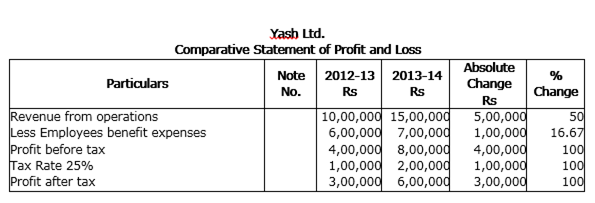From the following information related to Naveen Ltd. calculate
Return on Investment
Information: Fixed Assets Rs 75,00,000; Current Assets Rs 40,00,000; Current Liabilities Rs 27,00,000; 12% Debentures Rs 80,00,000 and Net Profit before Interest, Tax and Dividend Rs 14,50,000.
Return on Investment
= (Net profit before interest, tax and dividend/Capital employed)*100
Net profit before interest, Tax and Dividend = Rs 14,50,000
Capital employed = Fixed Assets + current assets- current liabilities
= 75,00,000 + 40,00,000 – 27,00,000= 88,00,000 Rs
Return on investment = (14,50,000/88,00,000)* 100= 16.48%






